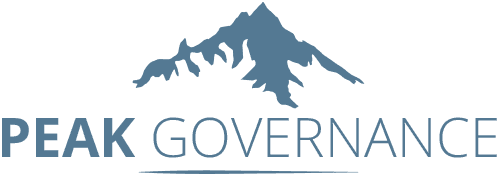9 Steps for Embedding an Operational Risk Management Framework
In today's fast-paced business landscape, operational risks can emerge from various corners, putting your organisation's stability and reputation at stake.
To navigate these treacherous waters successfully, embedding an operational risk management framework is paramount.
This strategy allows your business to identify, assess, and mitigate potential operational risks effectively. In this article, we'll walk you through the essential steps to establish a robust operational risk management framework.
1. Define Your Objectives:
Begin by clearly defining your organisation's objectives. What are your long-term goals? Identifying these objectives will help you determine the level of risk your business is willing to tolerate. Remember, risk management isn't about avoiding risks altogether but rather understanding and managing them within acceptable parameters.
2. Identify Risks:
To manage operational risks, you must first identify them. Engage with your team, including those on the front lines, to understand potential risks they encounter daily. These risks may be related to processes, technology, human error, or external factors. Encourage open communication to create a comprehensive list of potential threats.
3. Assess Risks:
Once you have a list of potential risks, assess their potential impact on your business. Consider the likelihood of each risk occurring and the severity of its consequences. This step will help you prioritise which risks to address first.
4. Develop Risk Mitigation Strategies:
With a clear understanding of your risks, it's time to develop mitigation strategies. These strategies should focus on reducing the likelihood of the risk occurring or minimising its impact if it does. Work closely with your team to brainstorm practical and cost-effective solutions.
5. Implement and Monitor:
After devising your risk mitigation strategies, put them into action. Ensure that all relevant team members are aware of their roles and responsibilities in the risk management process. Regularly monitor and evaluate the effectiveness of these strategies to make necessary adjustments.
6. Foster a Risk-Aware Culture:
Embedding an operational risk management framework isn't just about processes; it's also about cultivating a risk-aware culture within your organization. Encourage employees to report potential risks and incidents promptly. Reward proactive risk identification and reporting to create a shared responsibility for risk management.
7. Continual Improvement:
Your operational risk management framework should be dynamic and adaptable. Regularly review and update it to incorporate lessons learned from past incidents and changes in your business environment. This ensures that your risk management strategy remains relevant and effective.
8. Communication and Training:
Effective communication and training are vital components of any operational risk management framework. Ensure that all employees are well-informed about the framework and their role in it. Provide ongoing training to keep your team up-to-date with best practices.
9. Seek Expert Advice:
Sometimes, operational risks can be complex and require specialised knowledge. Don't hesitate to seek advice from experts or engage with a business advisor who can provide valuable insights and guidance tailored to your specific industry and challenges.
How can Peak Governance help?
Embedding an operational risk management framework is an essential step in safeguarding your business from unexpected disruptions. By defining objectives, identifying and assessing risks, developing mitigation strategies, and fostering a risk-aware culture, you can effectively manage operational risks and protect your organisation's long-term success. Remember that risk management is an ongoing process, and continual improvement is key to staying ahead in today's ever-changing business landscape.
At Peak Governance, we understand the unique challenges faced by businesses of all sizes. We specialise in developing customised Risk Management Frameworks tailored to your specific needs.
Here's how we can assist you:
Risk for Profit Workshops: Our Risk for Profit workshops can bring significant benefits to your business and provide you with the knowledge, tools, and strategies to identify and assess risks, make informed decisions, and turn potential threats into opportunities for profit.
Risk Reduction Techniques: Our comprehensive range of risk reduction techniques can help you identify, assess, and mitigate potential threats, allowing you to navigate uncertainties with confidence. We cover various aspects of risk management, including risk identification, risk assessment methodologies, risk mitigation strategies, and crisis management.
Risk Management Training & Frameworks: Our Risk management training programs are designed to equip your team with the necessary skills and insights to navigate risks confidently.

